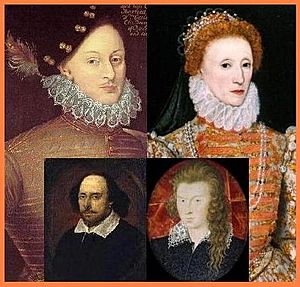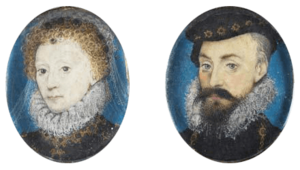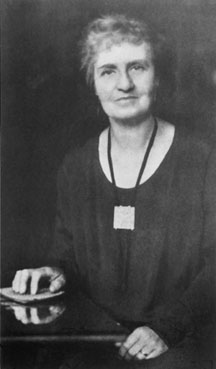Prince Tudor theory facts for kids
The Prince Tudor theory is a fascinating idea about the famous writer William Shakespeare. It's part of a bigger theory called the Oxfordian theory of Shakespeare authorship. This bigger theory suggests that Edward de Vere, 17th Earl of Oxford, was the real person who wrote all the plays and poems we know as Shakespeare's.
The Prince Tudor theory adds a secret twist: it claims that Oxford and Queen Elizabeth I were secretly in love. They supposedly had a child together, who was then raised as Henry Wriothesley, 3rd Earl of Southampton. So, according to this theory, Southampton was the secret son of Oxford and Queen Elizabeth!
There's also a newer version, called "Prince Tudor II." This version goes even further, suggesting that Oxford himself was a secret son of Queen Elizabeth. This would mean he was the half-brother of his own son, Southampton, which is a very unusual idea!
Many people who believe Oxford wrote Shakespeare's works don't agree with the Prince Tudor theory. They think it makes the whole idea seem less serious. But those who support the Prince Tudor theory believe it helps explain why Oxford might have used a pen name and why his life story seems to fit some of Shakespeare's writings.
Contents
Secret Royal Children Theories
The idea that the Queen had a secret child who was connected to Shakespeare's writings isn't new. It started even before the Oxfordian theory became popular. Back then, some people believed that Francis Bacon was the true author of the plays.
One writer, Orville Ward Owen, claimed in the 1890s that he found secret messages in Bacon/Shakespeare's works. He said these messages revealed that Queen Elizabeth was secretly married to Robert Dudley, Earl of Leicester. Owen believed they had two sons: Francis Bacon and Robert Devereux, 2nd Earl of Essex. He thought Bacon was the true heir to the throne, but was kept from his rightful place.
Another writer, Elizabeth Gallup, also claimed to find secret codes in Shakespeare's books. She said these codes confirmed that Bacon was the Queen's son. These ideas suggested that Bacon's sad life story, being a secret prince, was hidden in the plays.
When J. Thomas Looney started the Oxfordian theory in 1920, he didn't include any ideas about secret royal children. But soon, some of his followers started connecting the Oxfordian theory to these older ideas about secret royal families. Looney himself didn't like this. He wrote in 1933 that these ideas were "extravagant and improbable" and would make the Oxfordian cause seem silly.
Prince Tudor Part I: Southampton as the Secret Son
Percy Allen's Ideas
One of the first Oxfordians to develop the Prince Tudor theory was Percy Allen. In 1934, he published a book where he suggested that Queen Elizabeth and Oxford had a secret child. Allen first thought this child was named William Hughes, who became an actor and used "William Shakespeare" as his stage name. He believed Oxford was already using "Shakespeare" as a pen name for his plays.
Allen thought that this secret child, William Hughes, couldn't become king because he was born out of wedlock. He believed the story of these events was hidden in Shakespeare's famous sonnets. Allen suggested that Oxford wrote the sonnets to his actor son, who was the "Fair Youth" in the poems. He also believed the Queen was the "Dark Lady" mentioned in the sonnets.
Many Oxfordians, including Sigmund Freud, didn't like Allen's theory. Later, Allen changed his idea. He started to believe that Henry Wriothesley, 3rd Earl of Southampton, was the secret child of Oxford and the Queen, not William Hughes.
Allen even claimed to have contacted the spirits of Shakespeare, Oxford, Bacon, and Queen Elizabeth through a medium named Hester Dowden. He said the spirits confirmed his theory! They supposedly added that Oxford was part of a team of writers who created the works. Allen published these claims in 1947. He stated that the son of Oxford and Elizabeth was born in 1575. He claimed the Queen arranged for her own son to be secretly swapped with Lady Southampton's baby, so he would be raised as the legitimate Earl of Southampton.
Later Writers and the Theory
The Prince Tudor theory was further developed by Dorothy and Charlton Ogburn in their 1952 book. They also believed that Southampton was the secret child of the Queen and Oxford. They looked for clues in Shakespeare's plays and poems, suggesting that Oxford used his own life experiences to create the characters and stories.
They believed that the poem Venus and Adonis, which was dedicated to Southampton, described how he was conceived. They thought Oxford was "Adonis" and the Queen was "Venus." They also agreed that Southampton was the "Fair Youth" in the sonnets. They said the first 17 sonnets, which urge the "Fair Youth" to marry and have children, were written by Oxford to his secret son.
More recently, writers like Elisabeth Sears (2002), Hank Whittemore (2005), and Helen Heightsman Gordon (2008) have continued to explore the Prince Tudor theory. Sears looked at how Queen Elizabeth might have kept her pregnancies secret. Whittemore believes the sonnets hint at Southampton's royal blood. Gordon focuses on the love story between Elizabeth and Oxford, suggesting clues in the sonnets point to their secret relationship and the birth of their child.
Prince Tudor Part II: Oxford as the Queen's Son
A different version of the Oxfordian theory is called Prince Tudor Theory Part II. This idea suggests that Oxford himself was the son of Queen Elizabeth I. This theory claims that when Princess Elizabeth was 14, she had a child with her step-uncle, Thomas Seymour. This child was then secretly placed in the home of John de Vere, 16th Earl of Oxford, and raised as Edward de Vere, the 17th Earl of Oxford.
Paul Streitz's book, Oxford: Son of Queen Elizabeth I (2001), is the main book supporting Prince Tudor Theory Part II. Streitz also suggests that the "Virgin Queen" had other children with the Earl of Leicester.
Most Oxfordians do not accept this part of the theory. They believe Oxford's birth date (April 12, 1550) is correct. This would mean Elizabeth (born September 7, 1533) was 17 years older than Oxford, making it unlikely she was his mother at 14.
Streitz also claims that Oxford didn't die in 1604 as history records. He believes Oxford was taken to an island where he finished Shake-speares Sonnets and The Tempest. He also suggests Oxford was the "hidden genius" behind the King James Bible. Streitz claims Oxford died at the end of 1608, based on when the first mention of his death appeared.
Charles Beauclerk, Earl of Burford, a descendant of Oxford, also supports the idea that Oxford lived past 1604 in his 2010 book. He suggests Oxford went into hiding with the help of William Stanley, 6th Earl of Derby.
The Film Anonymous
The Prince Tudor II theory is also a big part of the 2011 film Anonymous. The movie shows events leading up to a rebellion against Queen Elizabeth. Through flashbacks, the film suggests that Edward de Vere (Oxford) was a brilliant writer who used William Shakespeare as a public face for his plays.
In the film, Oxford is shown as a lover of the Queen, and he fathers Southampton. The movie also includes the idea that Oxford himself is the Queen's son. This means Oxford is Southampton's half-brother and father. The film ends with Oxford agreeing to stay anonymous as a writer to save his son, Southampton, from being executed.
|




